Medical specialists train at Disaster City in first FEMA blended learning course
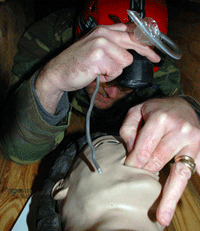

This pilot class was also the first time the course had been delivered in the blended learning format, where students did a portion of the training online before attending the hands-on training at Disaster City.
FEMA asked TEEX to rewrite the curriculum for Medical Team Specialist, which has been in existence since the early 1990’s, as part of a five-year contract that designates TEEX as the training provider for the National Urban Search and Rescue System.
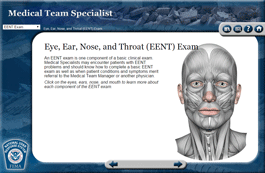

“One of the big changes is that we added 11 hours of online training, three more skills stations and three more scenarios to the course,” said Leake, Task Force Leader for Missouri Task Force 1 and Battalion Chief for the Boone County Fire Protection District. “Participants have more practical, hands-on time now. We minimized the time they sit in lecture and maximized the time in skills stations and scenarios.”
Joe Hiponia, Training Coordinator for the DHS/FEMA Urban Search & Rescue Branch, said the blended learning format reduces the time Task Force members spend away from their home base. “This means considerable cost savings at the sponsoring agency level.”
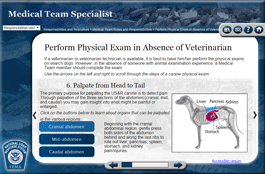

The mission profile for Urban Search and Rescue Task Forces has changed since the start of the program, Leake said. “Now a task force is similar to a Swiss Army knife, a fast-deploying team and the most versatile tool to deal with disaster. We are equipped and trained to do whatever a jurisdiction needs, from heavy rescue to handing out information to citizens.”
“This also means that the medical specialist mission has expanded to the care of not only Task Force members but also victims found during rescue and sometimes the general public. So this revised course now includes skills stations on pain management and field amputation, for example, as well as clinical examination of canines as well as humans. Medical personnel need to be more versatile — they may be dealing not just with trauma, but day-to-day clinic care, such as twisted ankles or something in an eye.”
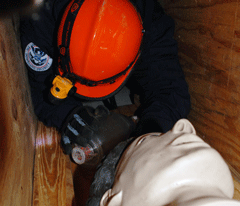

“We were blessed to be able to hold the class at TEEX. The facility itself and the logistics are just awesome, and Disaster City is built for this mission,” Leake said.
TEEX Training Coordinator Brian Smith said hosting the course at TEEX “gave members of US&R teams an opportunity to see the great facilities we have here at Disaster City.” “This FEMA course has been a team effort that showcases our expertise in adult education methodology, curriculum development and design, and current learning technologies, as well as our outstanding facilities,” he said.
Hiponia added: “We were very pleased to come to TEEX and work with the Knowledge Engineering Center and ESTI (Emergency Services Training Institute) to move into the blended learning education concept. We are revising all 13 foundational US&R courses into blended learning. The Learning Management System built by the Knowledge Engineering Center is tremendous. This has helped us create a 21st century learning environment that will allow us to reach all 6,000 members of the federal US&R System with necessary training.
“This relationship with TEEX is a huge step for us,” he said. “Some of the advantages are the curriculum management and a consistent, professional process for developing and presenting the curriculum, as well as reducing redundancies to allow us to insert more critical content into the courses.”
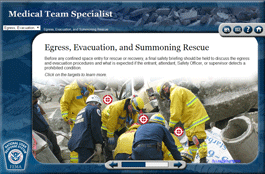

The online portion of the blended learning courses is delivered on a Learning Management System custom built for FEMA by John Romero and his team in the TEEX Knowledge Engineering Center, Smith added. “Students in the pilot course completed the online portion on the LMS and feedback has been very positive. Cost savings to the 28 US&R teams will be seen in the next year, as other courses are converted to a blended learning format.”
Other FEMA courses that have already been converted into a blended learning format and piloted include Logistics Specialist and Task Force Leader. Pilots of Technical Search Specialist and Canine Search Specialist will be delivered soon at Disaster City.
MEDIA CONTACT:
Brian Blake, TEEX Communications Director
[email protected]
PH: 979-458-6837, Cell: 979-324-8995
